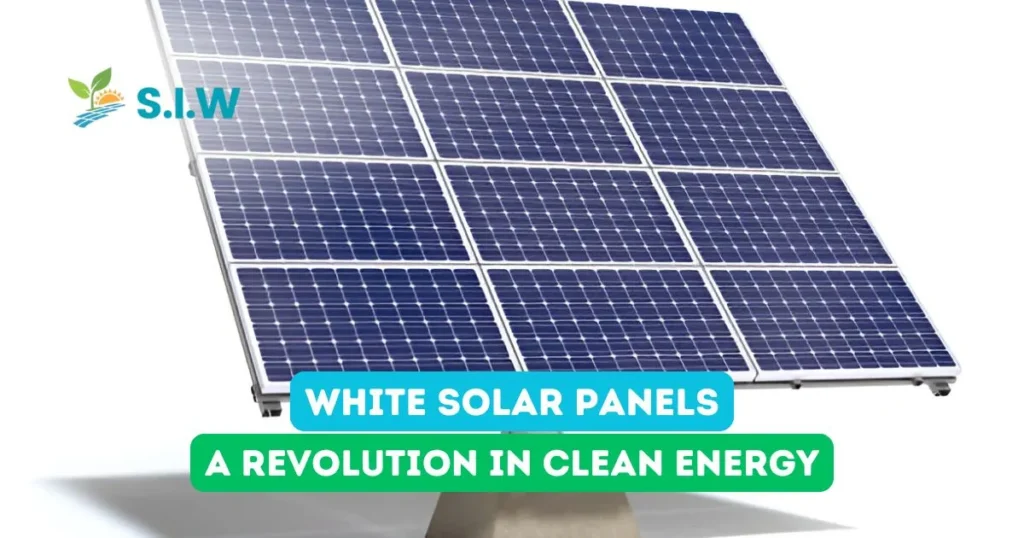As the world continues to shift towards renewable energy, solar power remains at the forefront of this transformation. Traditionally, solar panels are recognized by their dark blue or black hue, but a new trend is emerging: white solar panels. These panels represent a significant advancement in solar technology, promising not only aesthetic appeal but also enhanced functionality. This article explores the features, benefits, and applications of white solar panels, and why they may soon dominate the solar industry.
What Are White Solar Panels?
White solar panels are an innovative variation of the traditional photovoltaic panels, designed to blend seamlessly into a variety of architectural styles. The white appearance is achieved through the use of a specialized white solar cell technology, which maintains the efficiency of the panel while altering its color. Unlike conventional solar panels that absorb most of the sunlight, white panels reflect more light, making them suitable for applications where aesthetics are as important as energy production.
How Do White Solar Panels Work?
The core technology behind white solar panels involves a selective filtering process that allows only non-visible light to pass through and be absorbed by the solar cells. This process is made possible by a unique material layer applied over the photovoltaic cells, which reflects visible light, giving the panel its white appearance. Despite reflecting visible light, the cells still capture infrared and ultraviolet light, converting it into electricity.
This advancement means that while the panels may appear less capable of absorbing sunlight due to their color, they remain efficient. The development of white photovoltaic technology ensures that energy production is not compromised, offering a similar output to traditional solar panels.
Benefits of White Solar Panels
The introduction of white solar panels brings a host of benefits, particularly for urban environments and aesthetic-focused applications:
- Aesthetic Integration: White solar panels can be integrated into a building’s design without disrupting its aesthetic. This is particularly advantageous for historical buildings or modern architectures where traditional panels might detract from the design.
- Heat Management: Due to their reflective nature, white panels can reduce the heat absorbed by buildings, lowering cooling costs in the summer months. This characteristic makes them ideal for applications in warmer climates.
- Versatility: White panels can be used in a variety of settings, from rooftops to facades, without standing out. This versatility opens up new possibilities for solar installations in places where traditional panels might not be suitable.
- Environmental Impact: By promoting the use of renewable energy in aesthetically sensitive areas, white solar panels encourage broader adoption of solar technology, contributing to global carbon reduction efforts.
Applications of White Solar Panels
White solar panels are particularly suited to environments where visual impact is a concern. Their applications are diverse and growing:
- Architectural Projects: In urban developments where design is paramount, white solar panels can be used on facades, rooftops, and even as part of shading systems. Their ability to blend with a variety of architectural styles makes them a preferred choice for designers and architects.
- Historical Buildings: The integration of renewable energy solutions into historical sites has always been challenging due to aesthetic considerations. White solar panels offer a solution by providing energy without altering the building’s appearance.
- Consumer Products: Beyond buildings, white solar panels can be applied to consumer products such as solar-powered gadgets and vehicles. Their neutral color allows for integration into designs where traditional dark panels would be unsuitable.
- Agriculture: In agricultural settings, where energy needs to be generated without altering the landscape’s appearance, white panels can be installed on barns, greenhouses, and other structures without disrupting the visual environment.
Challenges and Considerations
While white solar panels offer numerous advantages, there are also challenges to consider:
- Efficiency Concerns: Although designed to maintain high efficiency, white panels may still be slightly less efficient than their traditional counterparts in certain conditions, particularly in lower light environments.
- Cost: The technology behind white solar panels is relatively new, and production costs can be higher than for traditional panels. This cost can be a barrier for widespread adoption, though prices are expected to decrease as the technology becomes more popular.
- Availability: Currently, white solar panels are not as widely available as traditional panels. Consumers interested in this technology may need to seek out specific manufacturers or wait for broader market adoption.
The Future of White Solar Panels
The development and increasing adoption of white solar panels represent a significant step forward in the solar industry. As technology advances, we can expect to see improvements in efficiency, cost, and availability. Additionally, as the demand for aesthetically pleasing renewable energy solutions grows, white panels are likely to become a standard option for both residential and commercial projects.
White solar panels are more than just a trend; they symbolize the evolution of solar technology towards more versatile and visually appealing solutions. Their ability to integrate seamlessly into a variety of environments without sacrificing performance makes them a promising choice for the future of clean energy.








